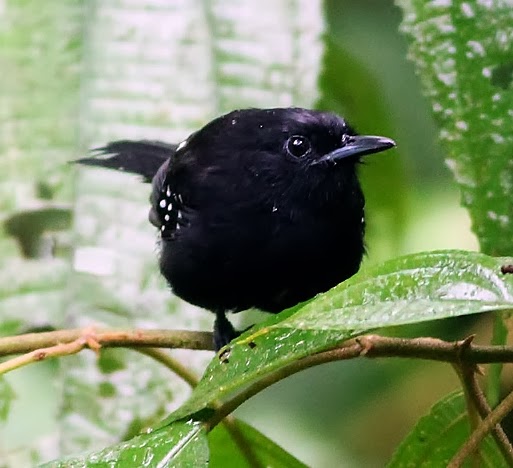 |
| Photo by Scott Olmstead (Flickr) |
Common name:
dot-winged antwren (en); papa-formiga-de-bando (pt); grisin étoilé (fr); hormiguerito alipunteado (es); tropfenflügel-ameisenfänger (de)
Taxonomy:
Order Passeriformes
Family Thamnophilidae
Range:
This species is found is found from southern Mexico to Colombia, then along the Andean region down to Peru and along the Amazon basin into northern Brazil as far as Mato Grosso, Pará and Amapá, and into the Guyanas.
Size:
These birds are 11-12 cm long and weigh 7,5-11,5 g.
Habitat:
The dot-winged antwren is mostly found in the lower strata of tropical rainforests and swamp forests, also using forest edges and adjacent second growth areas. They are present from sea level up to an altitude of 1.1.00 m.
Diet:
They feed on insects, such as grasshoppers, crickets, katydids, cockroaches, beetles, ants and caterpillars, as well as spiders. They only rarely follow army ant swarms to capture fleeing insects.
Breeding:
Dot-winged antwrens breed in January-August. The nest is a deep pouch made of decayed leaves and held together with fine dark fibres. It is lined with fine fibres and attached by the rim to a slender twig among dense foliage, usually 1-12 m above the ground. There the female lays 2 white eggs with brown spots. The eggs are incubated by both sexes but there is no information regarding the length of the incubation period. The chicks are fed by both parents and fledge about 9 days after hatching.
Conservation:
IUCN status – LC (Least Concern)
This species has a very large breeding range and the global population is estimated at 0,5-5 million individuals. The dot-winged antwren is suspected to loose roughly 15% of its habitats over the next 15 years, based on a model of Amazonian deforestation, which indicated it will likely face a moderate decline in the near future.







